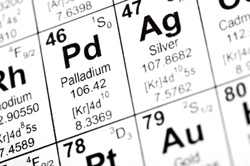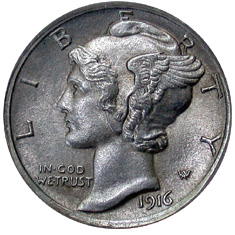 While gold and silver have dominated the media spotlight this year, the price of palladium has outperformed both. For the year to date, palladium is up $337 per ounce or more than 85%.
While gold and silver have dominated the media spotlight this year, the price of palladium has outperformed both. For the year to date, palladium is up $337 per ounce or more than 85%.
By comparison, gold has risen $333.50 per ounce or 30.67% from the start of the year. Meanwhile, silver has risen by $11.56 per ounce for the year to date, or around 68%. Much of silver’s rise has come over the course of the past three months.
| November 19, 2010 London PM Fix Prices | |
| Gold | $ 1,421.00 |
| Silver | $ 28.55 |
| Platinum | $ 1,786.00 |
| Palladium | $ 730.00 |
Palladium’s strong performance began following the sharp decline across all precious metals prices that took place at the end of 2008. Measured from palladium’s low of $164 reached in December 2008, the price is up an astonishing 345%.
From gold’s low price of $712.50 reached in October 2008, the price increase measures about 100%. For silver, from the low price of $8.88 reached in October 2008, the has returned 221.5%. Once again, palladium outshines the performance of both.
The current price of palladium represents a nine year high for the metal. The continued rise has been attributed to dwindling stockpiles in Russia amidst increased use within China for catalytic converters in gasoline powered automobiles.
Earlier this year the first palladium ETF for U.S. investors was launched by ETFS Securities, trading until the symbol PLL. More recently, a bill was introduced in the U.S. House of Representatives seeking to authorize American Palladium Eagle bullion coins.
 Should the United States Mint produce a palladium bullion coin? A Congressman from Montana, where most domestic palladium mining takes place, thinks so.
Should the United States Mint produce a palladium bullion coin? A Congressman from Montana, where most domestic palladium mining takes place, thinks so. Although gold and silver are experiencing a sharp decline today, they recorded strong performance during the second quarter of 2010. Platinum and palladium both posted declines for second quarter, but maintain gains for the year to date.
Although gold and silver are experiencing a sharp decline today, they recorded strong performance during the second quarter of 2010. Platinum and palladium both posted declines for second quarter, but maintain gains for the year to date. The Royal Canadian Mint has revived two bullion coin programs that had been previously been suspended for a number of years. This includes the Platinum Maple Leaf, with bullion coins already available, and the Palladium Maple Leaf, which is planned for later this year.
The Royal Canadian Mint has revived two bullion coin programs that had been previously been suspended for a number of years. This includes the Platinum Maple Leaf, with bullion coins already available, and the Palladium Maple Leaf, which is planned for later this year. ETF Securities USA recently filed with the SEC to launch exchange traded funds covering platinum and palladium. There are currently no exchange traded funds covering these metals available in the United States.
ETF Securities USA recently filed with the SEC to launch exchange traded funds covering platinum and palladium. There are currently no exchange traded funds covering these metals available in the United States.